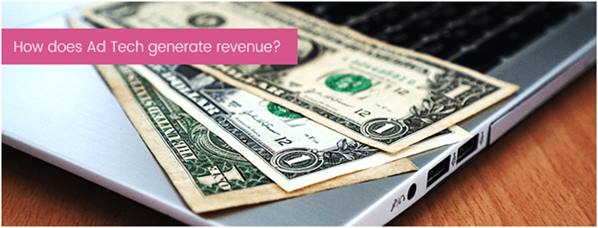
Once upon a time advertising came down to such basic things as images, symbols, and shop signs. And as you were wandering across the city, you could also hear town criers yelling to attract customers. As time went by, advertising made its appearance on mass media giving a new twist to traditional promoting. Until finally… we all went online.
Today, the Internet has taken over all spheres of our lives. In this day and age, the digital space is an unending source of opportunities. Financial opportunities, to be specific. The monetizing frenzy is gaining momentum and it’s more important than ever to know your way around it. This is where Ad Tech comes into the spotlight.
This discipline has been grabbing attention for quite some time, but it has gained wide recognition just recently. Adtech agencies have recognized how to leverage big data to amplify their resources and win over new customers. As a result, more and more companies are willing to invest in Ad Tech. But the question remains – what does Ad Tech mean and how make it work for you?
Behind The Beast
Advertising Technology (Ad Tech) is a term used to describe systems, software, or tools used to run, deliver, manage, and streamline programmatic advertising campaigns. Its main goal is to enable publishers and advertisers to perfect their ad campaigns.
Ad Tech applications usually optimize daily responsibilities in the advertising industry, such as targeting audiences, delivering campaigns, and studying campaign feedback. In the long run, Ad Tech solutions allow you to have a bird’s-eye view of your advertising campaign and make the most of it. Thanks to its multi-aspect processes, Ad Tech boosts the effectiveness of on-going processes and manages the increasing activity on the used ad space.
What’s the catch you’ll ask? Advertising Technology may not be rocket science, but it calls for accurate and surefire actions. Besides, it is a labor- and cost-intensive discipline with high technical and logistical requirements. Therefore, you have to choose wisely before turning to any Ad Tech company.
From this standpoint, well-versed Ad Tech companies are solid gold.
In order to do well out of the Ad Tech adjusted campaign, the company needs the system fine tuned to its objectives. The algorithms that crunch and group incoming data have to be flexibly customized. They should be tailor-made to make advertising as efficient as possible. It helps you get the point of the data-collection and bring it into play.
Ad Tech Fundamentals
Ad Tech focal area lies in befriending the data to deliver the ads as personalized as possible. The more data marketers have on the fly, the more effective and engaging the ads are to become. It also allows you to test and pinpoint the content with peak efficiency and it can be delivered in a far more scalable way.
In the end, marketers narrow down their strategy and use their advertising dollars most effectively on the used ad space.
At the core of Ad Tech operation lies the vast advertising ecosystem that includes:
- Media agency;
- Agency trading desk;
- Demand-side platform;
- Data management platform;
- Ad networks;
- Ad exchange;
- Supply-side platform;
- As well as an ad server.
This complex Ad tech landscape forms a loop of advertising supply and revenue-generating demands. This is made through fetching and analyzing data on the user activity on a specific platform.

Why is user data important for Ad Tech?
Inaccurate data results in bad decision-making. If you lean on the erroneous data points for actions, the outcome will be disappointing. For the Ad Tech discipline, working practices include harnessing data for measuring performance and targeting customers. Operational priorities also implement data to:
- increase operational efficiency in ad bidding;
- determine the most important KPIs for successful ad campaigns;
- obtain consumer insights;
- cut on the number of fraudulent clicks, and more.
Logically, the major source of Ad Tech information is a consumer. At first glance, the magic behind it is simple – consumers contribute to ad strategy by merely sticking around on a particular site. However, the behind-the-scenes is quite complex with a lot of machinery pulling out the incoming data.
Essentially, you can get information in several ways:
- Third-party – when you buy it from outside sources;
- First-party – when you compile it on your platform.
The end result is that data fuels ad targeting by making it more on-point. The main challenge is to collect information from actual customers with their values and attitudes. It will allow you to deliver services accordingly and not approximately.
That is to say, Ad Tech does not allow hit and miss. It calls for precise unerring information straight from the horse’s mouth. But the gem data does not grow on trees. It needs to be dug up, rinsed, and put to use.

What type of user data powers Ad Tech?
In-depth research performed by tracking tools paves the way for an advertising campaign. Follow-up consumer feedback leads to further enhancements. Among other things, consumer reaction also helps get your messages in front of the right audience and at the right time.
Among the parameters monitored are:
- Referring site – any website that sends a visitor to your website;
- Customer journey on-site;
- Actions (scrolling, clicks, highlights, media views, and others);
- Search terms;
- Session time;
- On-site behavior (preferences, interactions, redirecting through links and ads);
- Demographics (if available);
- Consumer’s path (browser specifications, ad blockers, etc.);
- Ad interaction and consumer engagement;
Another parameter can include first-hand feedback like comments, but it’s inessential and most of the time-inconsistent.
Although mining these personal data pieces is pushing privacy boundaries, it allows us to create successful ad campaigns targeted at high-value audiences. You might have got the feeling that it seems like a walk in the park, but in reality, the amount of incoming information is immense. And these data volumes require a complex system of platforms and technology to be managed effectively.

How does Ad Tech handle user data?
One of the hottest areas of Ad Tech is retargeting or remarketing. It makes the ads follow the users to take another shot at converting the person. Retargeting is a cookie-based technology powered by Javascript code that anonymously ‘stalks’ your audience throughout the Internet.
It is a smart way to bring back the user who has already shown interest in your company.
Typically, the retargeted ads are based on the context of a session or user interests. As a result, relevant visual and text ads generate a higher ROI compared to other digital channels.
However, the registered data is disorganized and needs to be made sense of. This is when another element of the Ad Tech ecosystem comes on stage – the Data Management Platform. This unifying platform collects and organizes the audience data regardless of the source. DMPs also activate the data to manage the customer journey more efficiently and target audiences across various channels.
Once DMP is done analyzing the data and determining the target audience, the data is handed over to Ad Server which chooses the best ad for specific users depending on the relevance, targeting, costs, and revenue goals. That is where retargeting chips in.
The usual pattern of Ad Tech operation includes the following stages:
- Solutions monitor and track user activity on the site;
- The collected data is then sent over to the Data Management Platform that manages, classifies and groups the information according to the pre-defined requirements;
- Then, the grouped data is transferred to Ad Server which reports and measures the right insights.
It enables publishers and advertisers to serve relevant ads and improve advertising spends. Ads fall into two categories:
- Personalized ads – based on users interests and demographics;
- Contextual advertising – based on keyword targeting.
- User interaction with the ads is being tracked;
- Ad Campaign adjusts to the reports received and separates the cream of the crop.
If done properly, Ad Tech boosts the performance and maximizes the benefits of the campaign.

Does Ad Tech cost money or make money?
Ad Tech ups the ante by letting companies cash on its latest features to transform their already existing users into profits and get a head start on tech-lagging competitors. The money-generating nature of Ad Tech is assured by the distinct system of monetizing where each participant gets his share of the spoils.
The secret behind Ad Tech’s popularity is a clear and straightforward allocation of responsibilities in the ad campaign. In general, there are three lead actors in the advertising campaign, including:
- Advertisers – the players with the adverts. DSP is Advertiser’s bridge to the Ad Exchange
- Publishers – the one with spaces for adverts which is also known as an ad inventory. In this case, SSP is Publishers’ door to the Ad Exchange
- Ad Exchanges – a digital marketplace that serves both advertisers and publishers. Ad Exchanges facilitates the buying and selling of ad inventories to both parties. One of the most prominent ad exchanges are Google Ad Exchange, OpenX, and AppNexus.
Based on the chosen business model, companies choose their monetization type. In any case, the fees are shared between the interested parties – advertisers, publishers, and platforms and are mutually beneficial.
Among the most popular monetization models are:
- Cost per impression (CPI) – where advertisers pay only when the ad is clicked (refers to the cost per thousand). In this case, an impression is used as a metric that evaluates the number of ad views or viewer engagements.
- Cost per action (CPA) – where the cost of advertising depends on the actions of the user. It is considered to be the most beneficial model since the advertiser pays for the user who has made the effective action (purchase, registration, download, etc.).
- The model also includes CPS (Cost-Per-Sale) – payment for the sale, and CPL (Cost-Per-Lead) – payment for the lead (action).
- Cost per click (CPC) – a risk-sharing model that is usually used for contextual-based content. CPC grew into a click-through rate— the total of clicks divided by the number of impressions.
- Cost per lead (CPL) – a form of performance-based advertising where ad content brings contacts with users.

The bottom line
Marketer demand for technology has never been stronger with high-flying brands looking for vendors to access an untapped pool of insightful data. This makes Advertising Technology the need of the hour that shifts the traditional approach to stimulus-response advertising. The secret behind the Ad Tech might is a diverse system of tools that weave together to make a single robust framework. Automation and conjoint processes facilitate more in-depth and profitable audience targeting which results in more relevant data and on-point ads. Although marketers love to pronounce TOD to Ad Tech, the sky is still far from falling in this industry.




